Photos: Gorgeous Shots of the Adorable Horned Lizard
Across the continent

Currently, there are eight known families of lizards found across North America, with 155 identified species. These squamate reptiles first appear in the fossil record during the Triassic period some 251 million to 199 million years ago. Found on all continents except Antarctica, lizards thrive in arid regions at elevations from sea level to 16,000 feet (5,000 meters). Worldwide, they range in size from the less than 3-inch-long (7 cm) gecko species to the giant Komodo dragons, Varanus komodoensis, which can grow upward to 10 feet (3 m) in length.
Most intriguing
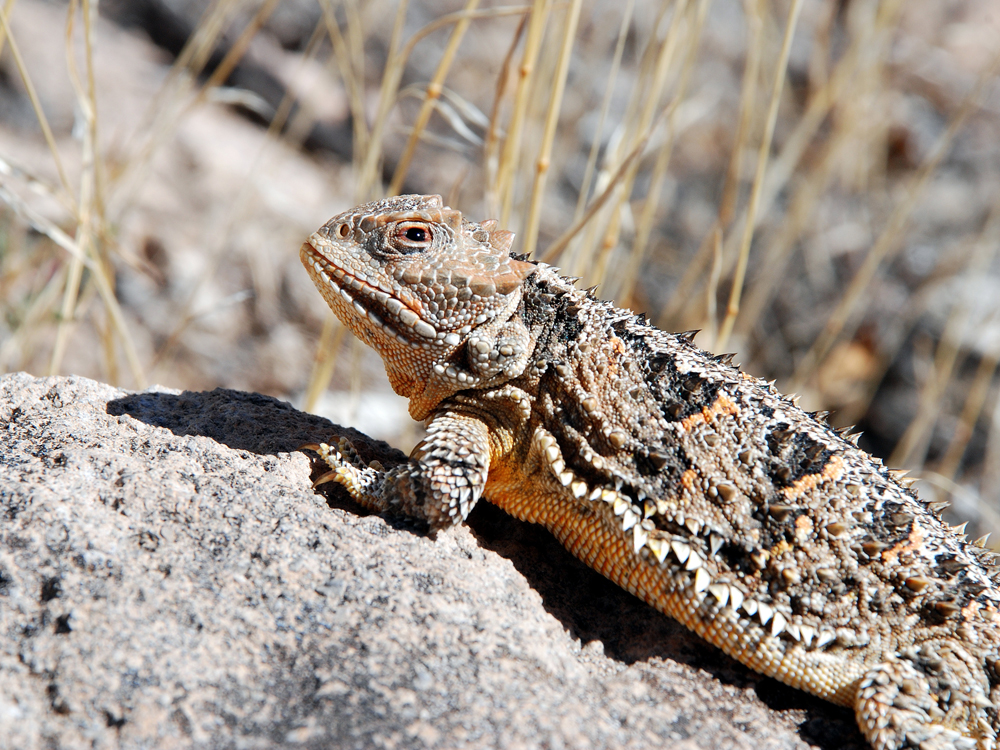
The horned lizard is found only in the western part of the United States, Mexico and Central America. In North America, horned lizards range from Arkansas to the Pacific Coast and from Guatemala to British Columbia. They are most commonly found in the vast arid desert regions but can survive in mountainous areas upwards to 10,000 feet (3048 m).
Not like the others
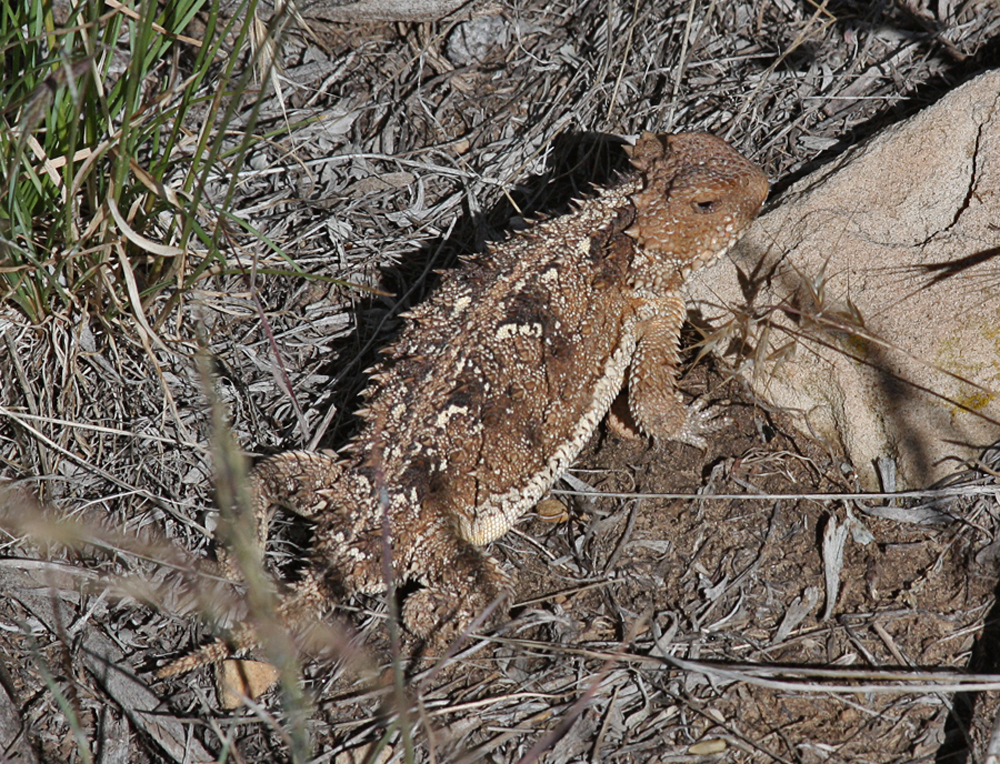
The body shape of the horned lizard is unique when compared to the sleek, tubular shape of other species of lizards. Horned lizards' body shape best resembles that of a toad or frog and gives rise to the often used common name for these reptiles — the horny toad. Their wide, flattened body shape is well adapted to their hot desert environment in which they frequently live.
Squirting blood
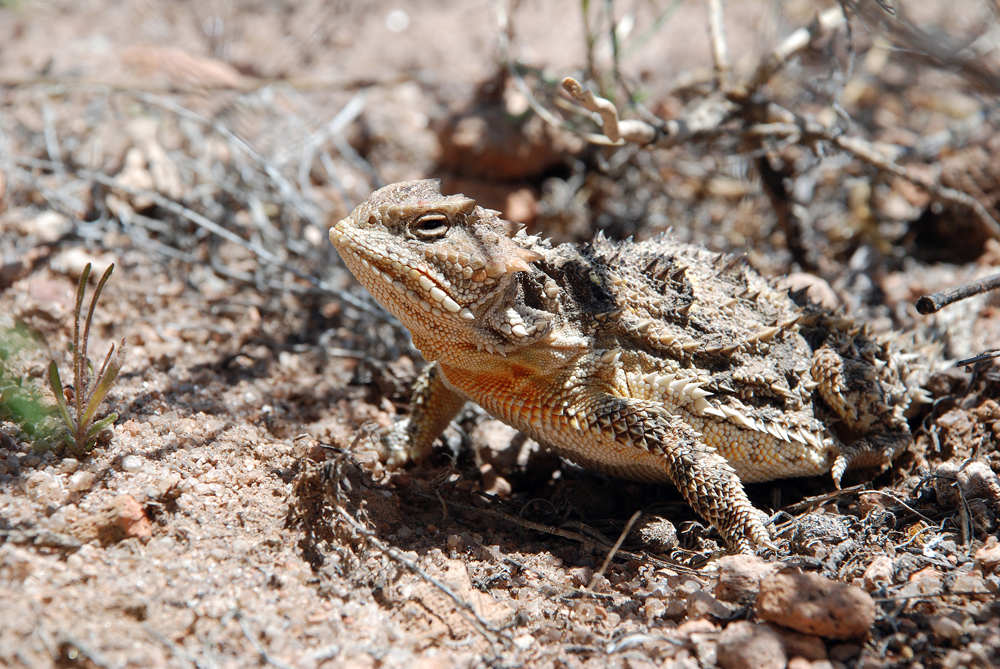
Another common feature of horned lizards are their body spines. These sharp spines act as defensive weapons against hungry desert predators. Some species of horned lizards are capable of inflating their bodies to twice the normal size until they resemble a spiny balloon. Some species too are capable of squirting a stream of blood from their orbital sinus into the mouth or eyes of a predator — surely one of the most bizarre defense mechanisms in all of the animal kingdom.
Hunter

Horned lizards are foragers. Their preferred food sources are the many species of ants that swarm the desert floor. But their foraging behavior often puts them at risk of being eaten by hawks, snakes, roadrunners, coyotes, ground squirrels, mice and other lizards. Their best defense mechanism is the skin color patterns that resemble the desert soil. If they remain still, flatten their body against the ground to eliminate their shadow and burrow under any loose sand and soil, potential predators often will pass the horned lizard by and continue to search for a more easily seen prey.
Cutie pie

Most species of horned lizards breed in the spring. They lay clutches of three to 45 eggs on the desert soil, which remain unattended. Interestingly, the egg shells tend to be a shade of white, are leathery and about 1/2 inch (1.27 cm ) in diameter. The hatchlings are less than 1 inch (2.54 cm ) in length and most immediately bury themselves into the soil upon hatching. Young horned lizards receive no parental care and must immediately begin to hunt in order to survive. The young are often referred to as "cute" and their young skins are relatively smooth. The high-elevation living, greater short-horned lizard, Phrynosoma hernandesi, bears live young as the low mountain temperatures would thwart egg development.
Survival instincts
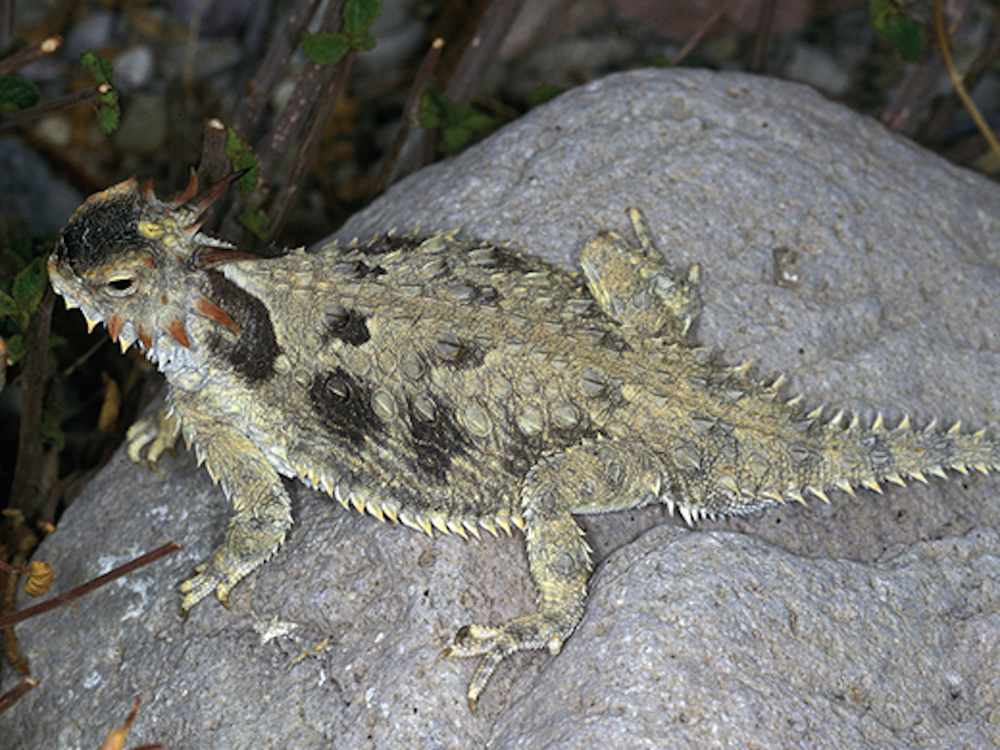
There are 14 recognized species of horned lizards in North America. Each species has evolved to survive in the unique environmental regions of the continent. The Blainville's horned lizard, Phrynosoma blainvillii, shown here, is found along the Pacific coast from Baja California to the Bay Area and in the desert regions west of the Sierra Nevadas. Adults typically feed on ants, especially harvester ants. The Blainsville's horned lizard is suffering from a population decline because of the loss to their natural habitat.
Get the world’s most fascinating discoveries delivered straight to your inbox.
Sun-worshipper
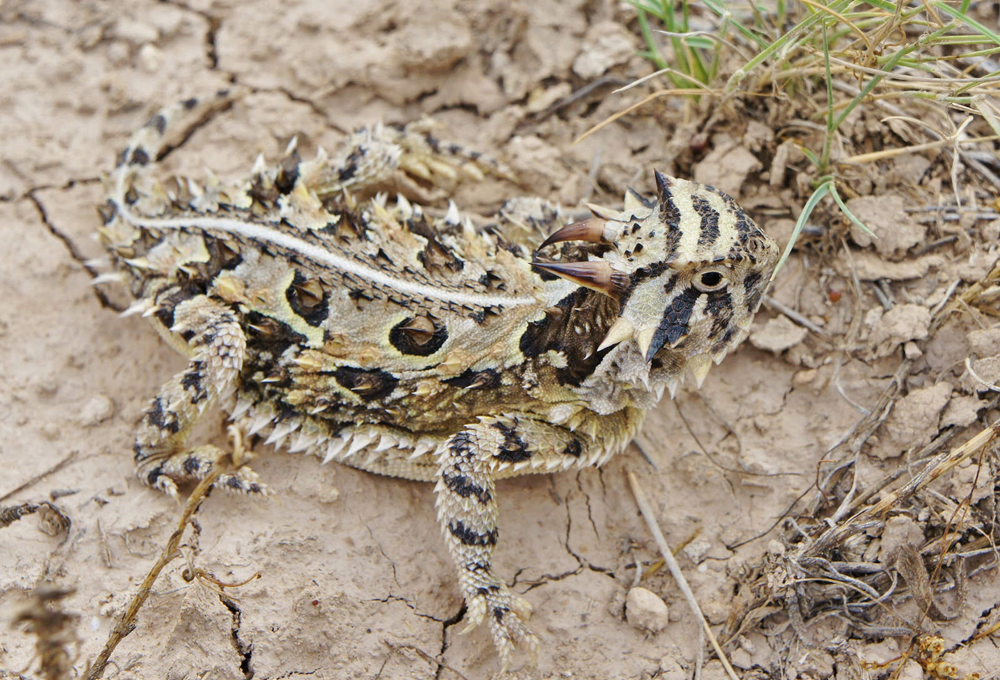
The Regal horned lizard, Phrynosoma solare and shown here, is found in northwestern Mexico extending into the southwestern regions of the United States at elevations from sea level to 4,800 feet (1,460 m).
They are commonly found in Upland Sonoran Desert scrub, Chihuahuan Desert scrub and Semidesert Grassland communities. They seem to prefer areas where the ground is relatively flat with many, open sunny patches. These diurnal predators are most active during the many warm spring and fall days. They burrow into the soil to seek shelter from the desert winter cold but will become active on unseasonably warm winter days.
Named for an explorer
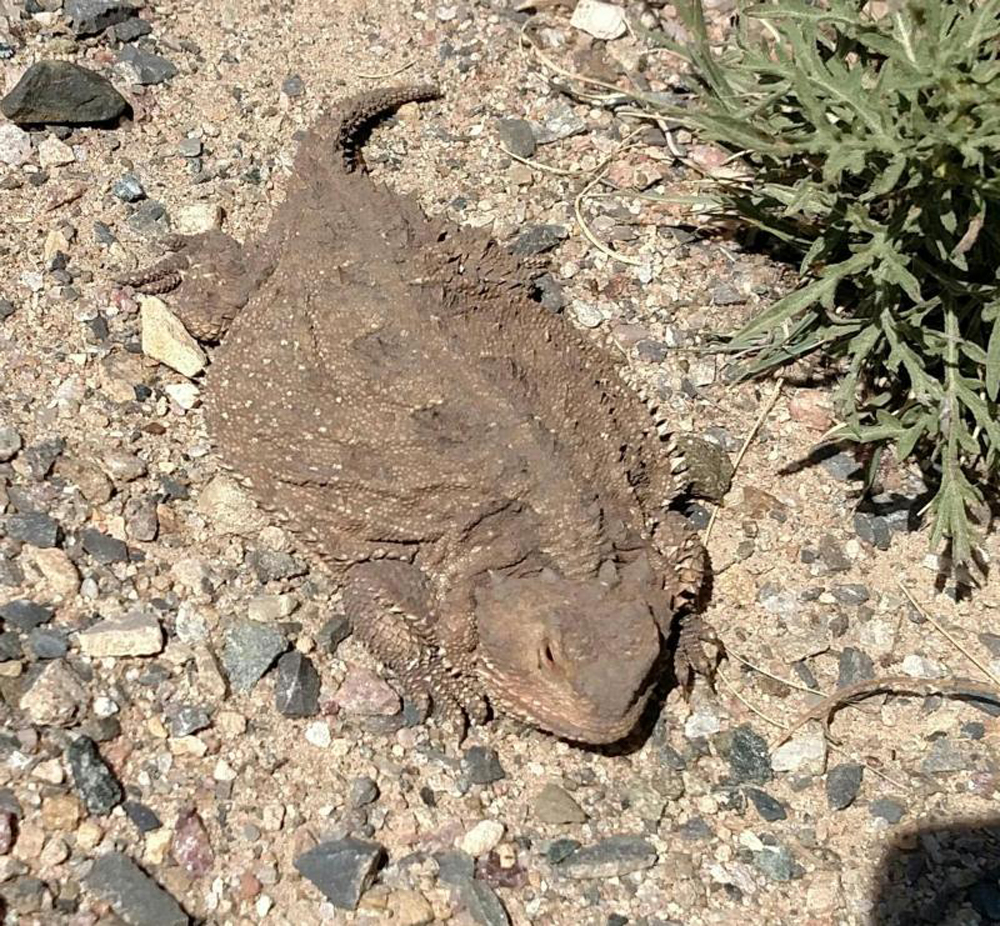
The Hernandez's short tail horned lizard, Phrynosoma hernandesi, shown here, is also known as the greater short-horned lizard. It has the widest geographical distribution of all horned lizards as they range from southern Alberta, Canada, east into Kansas and as far south as Durango, Mexico. They are found in elevations up to 11,000 feet (3,353 m). Like all horned lizards, ants are their favorite source of food but other ground-dwelling insects, true bugs and other arthropods are readily consumed. The species name, hernandesi, is to honor Francisco Hernandez, 16th-century naturalist and physician to the King of Spain who first described the horned lizard during one of his explorations of the New World.
Unique markings
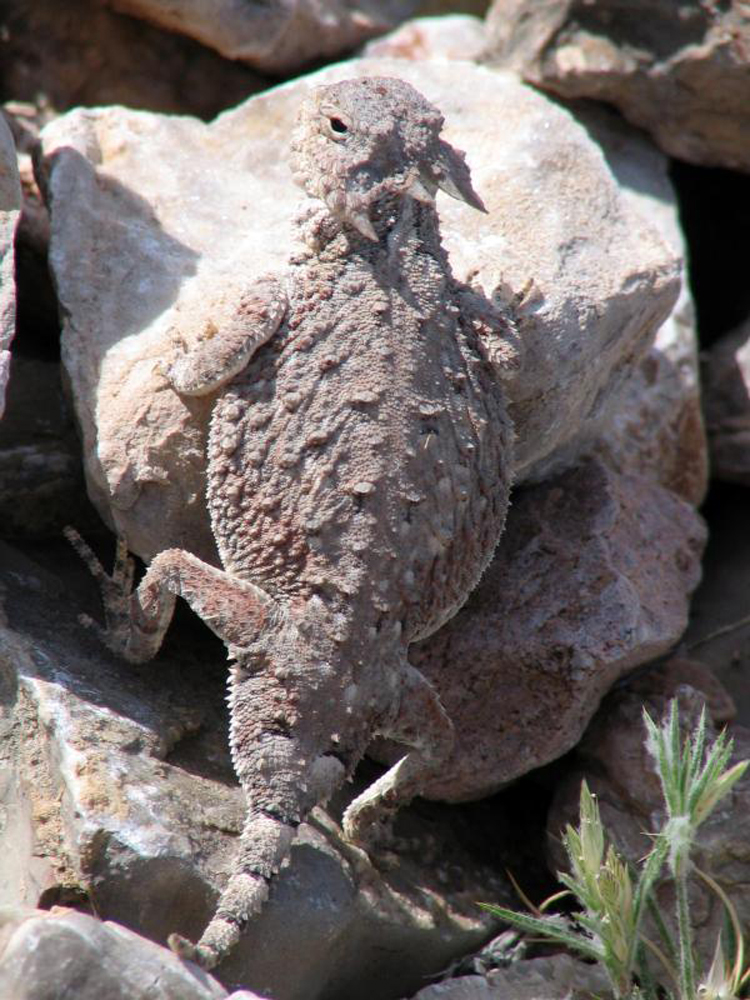
The round-tailed horn lizard, Phrynosoma modestum, shown here, is one of the smallest of horned lizards and most commonly found in the arid regions of the southern Great Plains south into central Mexico. Identification of this species is aided by the distinct banded striping found on their tails. They seem to prefer open habitats covered with small rocks/ pebbles. They are diurnal from April to September and hibernate in the soil during the remainder of the year. Ants, especially honey pot ants seem to be a favorite meal.
A big'un
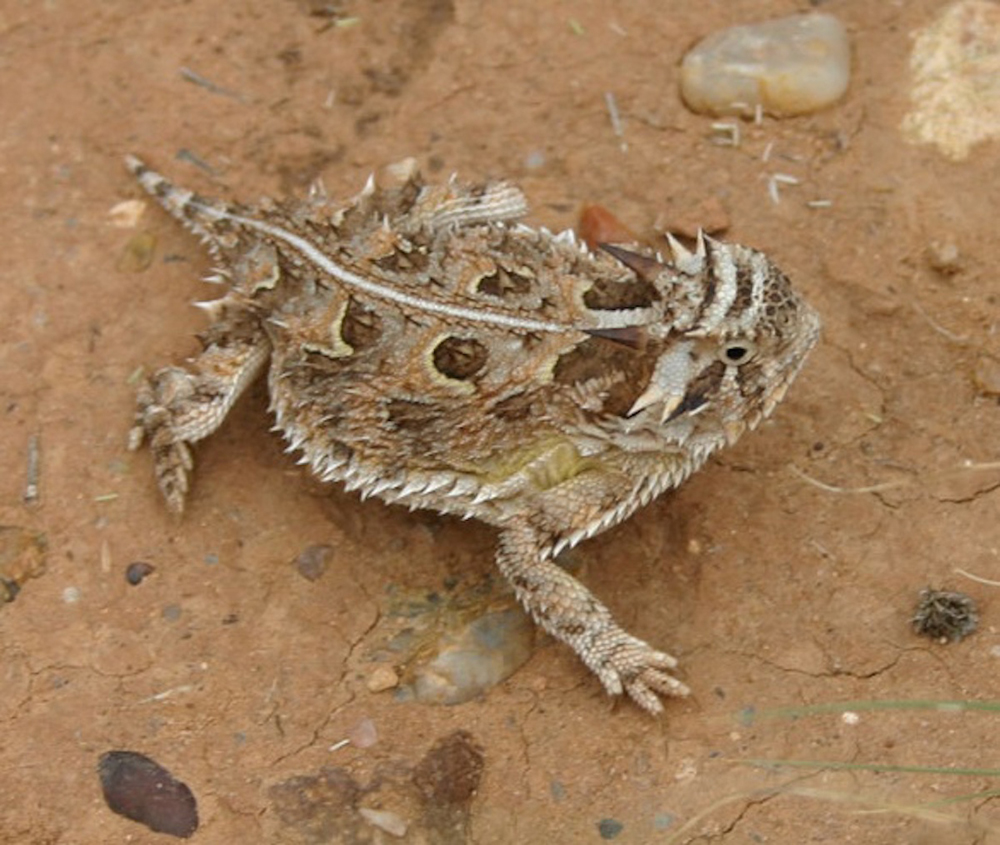
The Texas horned lizard, Phrynosoma cornutum, shown here, is the official reptile of the state of Texas. It was once common from the south-central regions of the United States south into northern Mexico but loss of habitat and use of pesticides have resulted in this horned lizard being placed on the threatened species list. Identification of the Texas horned lizard is aided by a light line of scales running down the middle of its body from its head through its tail. It is the largest-bodied of all North American horned lizards with some females growing to a length of 5 inches (12.7 cm) .


